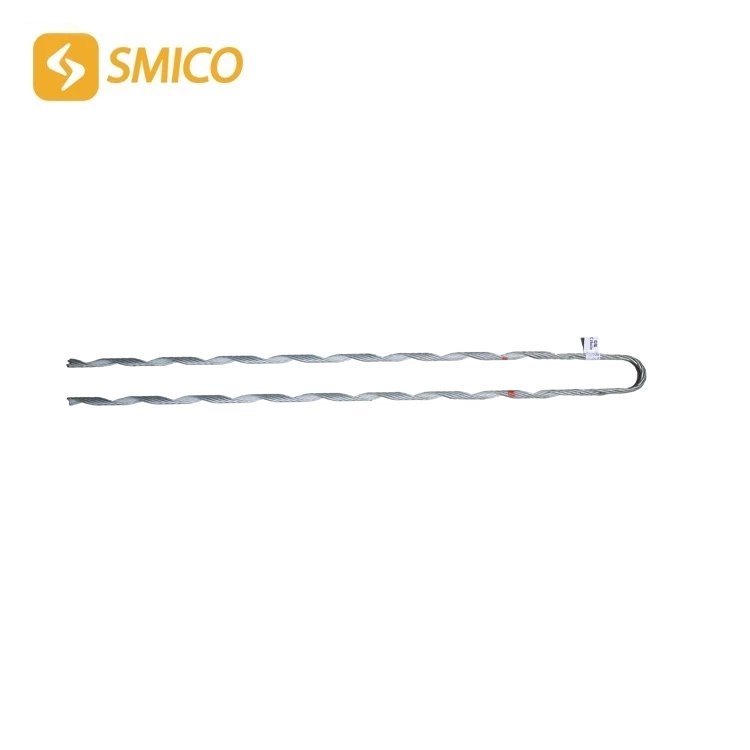Pre-twisted Wire Repair Process
preformed armour rod is a product made by pre-twisting several single-strand spiral wires. According to the cross-sectional size of the conductor, the spiral wire with a specified inner diameter is rotated in the spiral direction to form a tubular cavity. armor rods is wrapped in the outer layer of the conductor along the spiral. Under the tension of the conductor, the spiral rotates to form an anchoring force grip on the conductor. The greater the tension of the conductor, the tighter the spiral is rotated, and the greater the grip on the conductor. The previous repair armor rods for acsr is widely used in 35 kV and above lines, but it is less used in 10 kV lines, and can only be used on line segments with 7% or less broken strands and a small damage range, and cannot achieve the reinforcement effect. The tension armor rods transmission line splicing strip is a new type of armour rod product that has appeared in recent years. It is used as a splicing hardware. It can be used to replace conventional clamp-crimping splicing tubes and crimping tubes, and can be used to connect aluminum stranded wires, aluminum alloy stranded wires, steel core aluminum stranded wires and other conductors to achieve their original mechanical strength and conductivity.
A complete set of tension armour rod in transmission line splice strips is used at the construction site. The center mark of the steel core splice strip is placed at the end of one conductor. Half of the length of the splice strip plus 6.35mm is measured along the direction of the conductor. Tape is wrapped around this point, and the outer aluminum wire is cut off to expose the inner steel core. The other conductor is processed in the same way. Select the group of steel core splice strips with the largest number of components. Start the operation by placing the center mark at the end of the steel core on one side, and wrap half of its length around the conductor. Place the end of the other conductor near the center mark, so that the two ends are about 2mm apart, and wrap the splice completely around the conductor. Place the second group of splice strips at the center mark and wrap one to two pitches on both sides of the center. Install the third group of splice strips in the same way. Completely installed steel core splice strips. To ensure reliable electrical connections, all wires, whether new or old, must be thoroughly polished and then installed immediately. High-quality conductive paste should be used to delay oxidation. Select the group of outer splice strips with the largest number of components and align the center mark with the center mark and carefully wrap it. Place the second set of splicing strips at the center mark, wind one to two pitches on both sides of the center, install the third set of splicing strips in the same way, and then wind the second and third sets of splicing strips at the same time until they are completely wound. The tail end of the outer splicing strip can be put into place by folding the wire or turning the splicing strip with your thumb after the tension splicing strip is fully installed.

